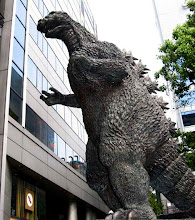

The discovery that the human brain can change its own structure and function with thought, and experience, turning on its own genes to change its circuitry, reorganize itself and change its operation is the most important alteration in our understanding of the brain in four hundred years. We shall explore how, given that the human brain has been plastic, we have missed this core feature. Many new cures for neurological and psychiatric conditions are described. This discovery has major implications for understanding the humanities, social science and culture, for it means that our individual cultural practices and experiences actually rewire our brains, so that differences between cultures give rise to different kinds of brains in the members of those cultures.
This is proposed by Norman Doidge, MD from Columbia University Center for Psychoanalytic Training and Research.
An important example of neuroplasticity is how we gain skills. Doidge presents an experiment performed by Pascual Leone where he mapped the brains of blind people learning to read Braille. Braille reading is a motor activity, which involves scanning with a reading finger, and a sensory activity, which involves feeling the raised bumps. The brain maintains a representation of these sensory and motor aspects and they are located on the sensory and motor cortexes respectively. The blind subjects practiced 2 hours a day, Monday through Friday, with an extra hour of homework. The mapping of their brains took place on Monday, after the weekend, and Friday, immediately after their week cram. What the scans ultimately showed is that the maps dramatically increased in size on Friday scans but returned to a "baseline" size on the following Monday. It took 6 months for the baseline Monday map to gradually increase and by 10 months they plateaued. After the blind subjects took a two month break, they were remapped, and their maps were unchanged from their last Monday mapping. What this shows is that long lasting changes as the result of skill learning took 10 months of repeated practice. The reason why short-term improvements were made based on the Friday mappings, but eventually disappeared, is the result of the type of neuronal connections that were taking place. The Friday mappings were the result of the strengthening of existing neuronal connections. Monday mappings, though showing little progress initially and plateauing at 10 months, were the result of the creation of new neural connections.




No comments:
Post a Comment